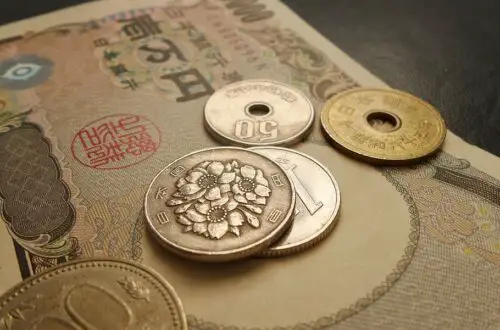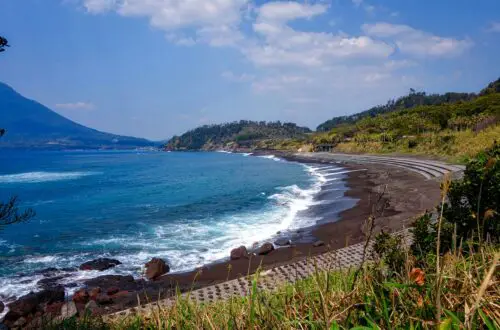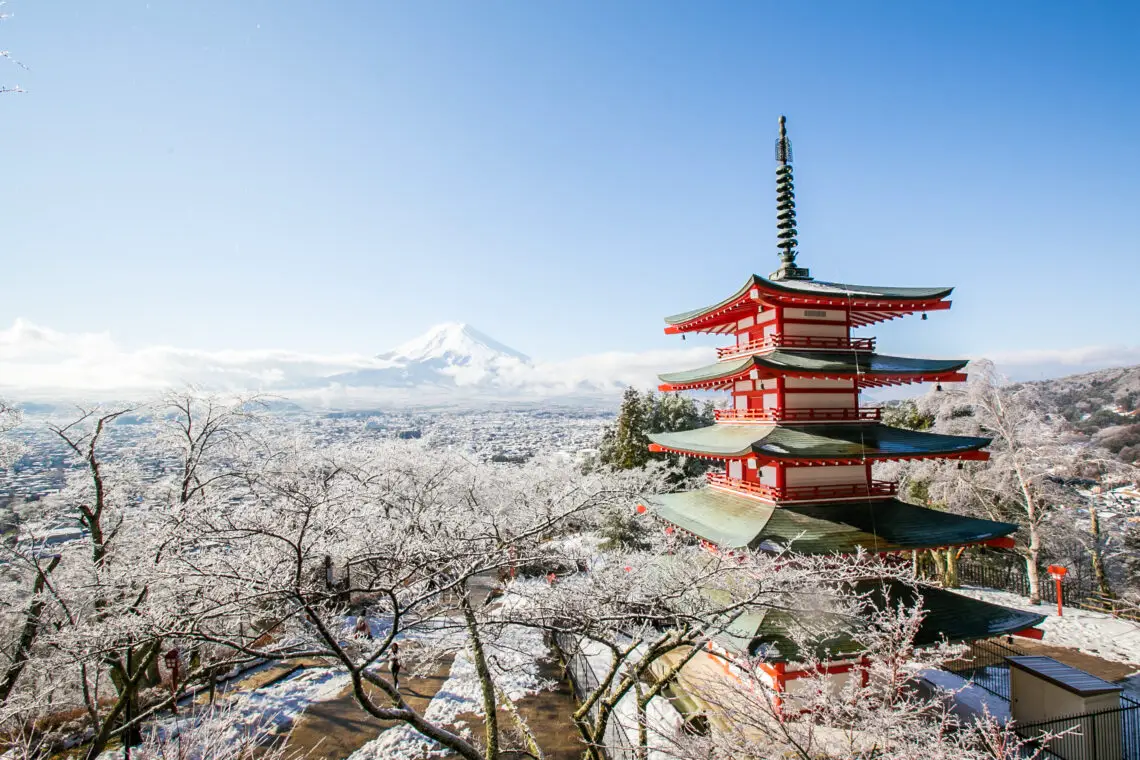
Visiting Japan in January: Is Traveling Japan in Winter Worth It?
Japan may not be the first place to pop in your mind when thinking of a January getaway because it’s the mid-winter and off-peak tourism season there. But guess what? Picking an unusual season can be hugely rewarding!
Visiting Japan in January is absolutely worth it. Forget about the sub-zero temperatures and snow because the country has many climatic zones. Avoiding the chilly areas does not make the trip any less enjoyable.
Japan could be an absolute treat as a winter holiday destination if you can plan the itinerary carefully. Indoor and outdoor fun is abundant, and a few big winter festivals offer the experience of a lifetime. There could be a few downsides, but overcoming them will let you immerse into the country’s magical wintertime beauty. Hang in on there! I’ll explain what problems you can face and which activities to choose to reap the rewards.

Visiting Japan in January: What are the Problems?
You must be itching to know the stakes of having a winter-trip to Japan. Weather is the prime concern as the winter can get chilly with temperatures dropping below the freezing point. Northern regions are colder than the southern part and snowfall is higher on the west side than on the east.
The temperature in most big cities such as Tokyo, Osaka, Kyoto, and others remains below 10°C in January.
In Hokkaido, the average temperature is -3.6°C because it’s the northernmost part of Japan. Winter rainfall is scarce across the country and precipitation falls in snow forms.
The average January temperature in some big cities are:
- Tokyo: High 10°C/Low 2°C
- Osaka: High 9°C/Low 2°C
- Nagano: High 3°C/Low -5°C
- Hokkaido: High -0.6°C/Low -7°C
- Hiroshima: High 9°C/Low 1°C
- Kyoto: High 9°C/Low 1°C
- Okinawa: High 19°C/Low 14°C
The troubles that cold weather can cause are:
1# Public Transport Delays
Most Japanese big cities, excluding a few warm areas such as Okinawa, experience snowfall that can be heavy sometimes, which disrupts the schedules of trains, buses, flights, and ferries.
Many travelers, especially the budget trippers and backpackers, depend on public transport.
Don’t plan a tight itinerary because your ride or flight can run late or be canceled altogether.
2# Traffic Jams
Sounds unusual, but it happens, even in rural areas! Icy roads become slippery, demanding slow driving. The snail pacing causes traffic jams in peak hours. Even booking a taxi or renting a car won’t save you from getting stuck.
What’s the solution? Plan around the delays and try to start the journey with enough time in hand.
3# Accidents Caused by Snow and Ice
Most big cities could be just wet and cold during winter, which spikes road accidents. Walking is not safe either, as snow and concrete sidewalks are the perfect disaster recipe for slipping and falling.
Nothing to worry about much, though. Wearing winter boots with good traction will keep you safe.
4# Crowds and Costs
An off-season means discounts and fewer crowds, but not in Hokkaido and central Honshu where you have to spend a good sum of money due to the peak ski season. Sapporo’s annual Snow Festival, which runs from late January to February, also draws a sizeable crowd and hikes the prices of everything.
Big cities such as Kyoto, Hiroshima, and Tokyo remain less crowded than usual, but you will still find a good number of tourists there because something always goes on in these places.
The Reasons You Should Travel Japan in Winter
Now, the good parts.
Japan is beautiful and winter unveils some hidden gems. Here are five activities and five events that will convince you about making a trip in January.
5 Things to Do in Japan in January
It’s hard to select five activities only because you can do tons of things during this time of the year. Apart from enjoying indoor activities such as visiting temples, museums, galleries or slurping ramen and sipping sake in a restaurant, the things you can do in the mid-winter are:
A hot spring bath is not just a simple bath, it’s an art, and it feels better in cold weather. Imagine soaking in lukewarm water and powdery snow is falling on your face and eyes. Ah, heaven!
The Tohoku area has some amazing outdoor onsens but spending a day or two in an onsen resort will be worthwhile.
Many outdoor sports lovers don’t know that Japan has some of the best ski and snowboarding tracks in the world.
Powder snow and over 500 ski resorts dotting across the country make sure that tourists get quality time.
Hokkaido is the Mecca of these activities, and Nagano also has many top resorts.
Sure, you can visit them in the summer too, but finding them soaking in onsen with snowflakes drizzling is another level of experience.

These wild macaque monkeys have been living in the Jigokudani Monkey Park for ages.
Another reason to visit Japan in winter. From the end of November through February, beautiful light decorations are used to beautify various parks, stations, and other spots across cities and towns.
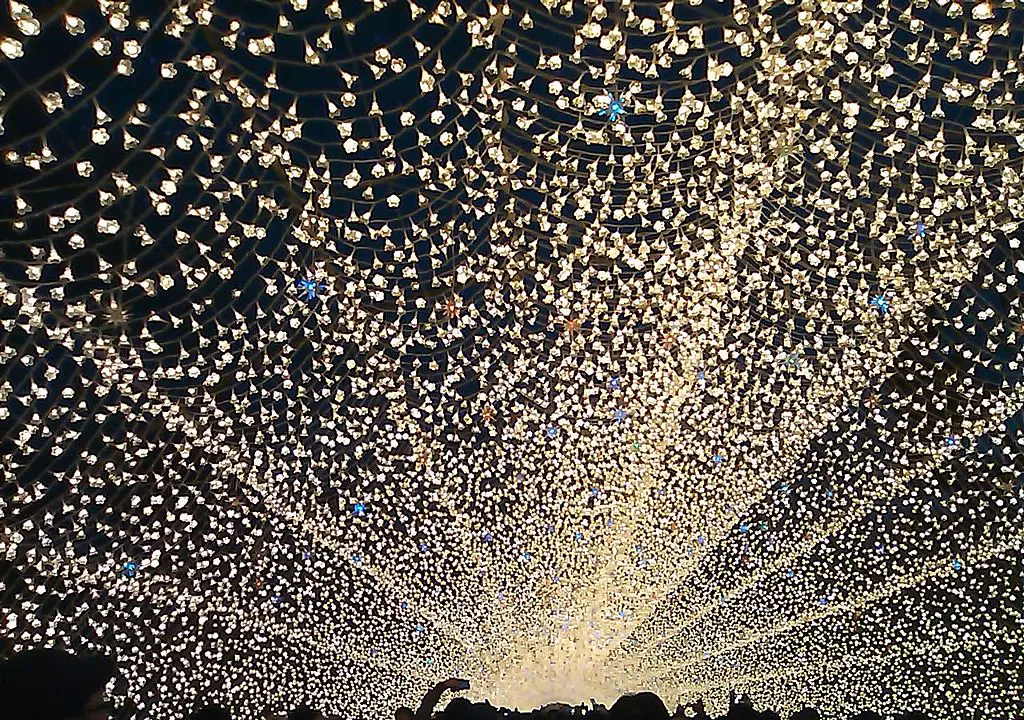
Kobe’s Illuminarie is worth visiting for its large-scale arrangement. The Nakanoshima Park Illumination in Osaka draws large crowds too for its thematic decor every year.
Winter offers a unique Mt. Fuji view as it’s the only time when the famous mountain wears a snow-crown. If you’re in luck, it’ll be a cloud-free day and you can watch it from a distance.

The Fuji Viewing Platform at Kawaguchi-ko (Lake Kawaguchi) offers an excellent viewing spot.
To watch the mountain from a roller coaster car, go to the nearby Fuji-Q Highland amusement park.
Five Events to Enjoy in Japan in January
Japan observes some of its significant holidays and yearly festivals in the middle of the winter. If you are enthusiast about the cultures of the countries you visit, these events are perfect:
When: January 1
Where: All across Japan
Unlike Chinese or Korean New Year, the Japanese celebrate this day on January 1st.
Brimming with traditions, history, and delectable foods, the celebration goes on for three days.
People gather together to watch the first sunrise, for which Tokyo’s Mount Takao is a popular spot, and eat Osechi Ryori (an assortment of dishes) served with Otoso (prepared from rice wine).

They also visit and pray at temples and shrines (known as Hatsumode) during these days. On the 2nd January, the gates of the Imperial Palace in Tokyo is opened with the greeting emperor waving from the balcony for visitors, which happens only twice a year.
When: January 15 or 18 (depending on the shrines)
Where: All over Japan
This traditional event takes place around mid-January. No need to go to a certain place to join this event because it happens all across the country. People in a neighborhood gather around and light a bonfire with bamboo, cedar, straws, and reeds.
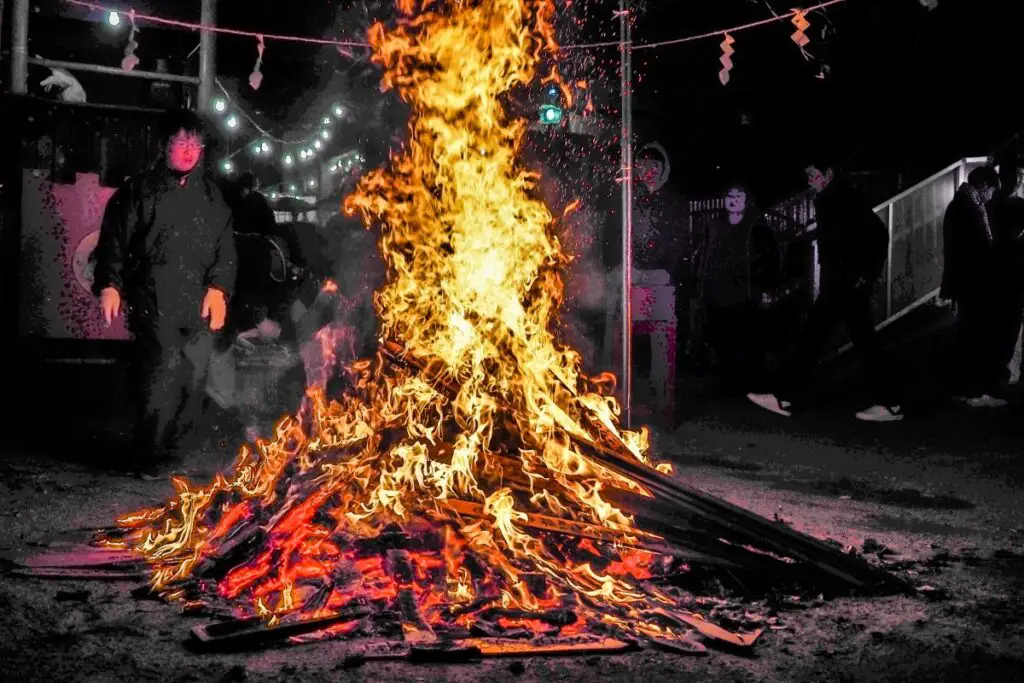
Everyone throws into the fire lucky charms and other good-luck items from the previous year as a gesture to express gratitude for the good luck they have brought. The fire is believed to bring good health and success in trades.
When: Second Monday of January
Where: Sanjusangen-do Temple, Kyoto
An age-old tradition having its root in the late 16th century. It’s mainly an archery event that takes place in the main hall of the Sanjusangendo Temple.
More than a thousand archers donning traditional dresses shoot arrows at a one-meter circle from a distance of 60 meters.
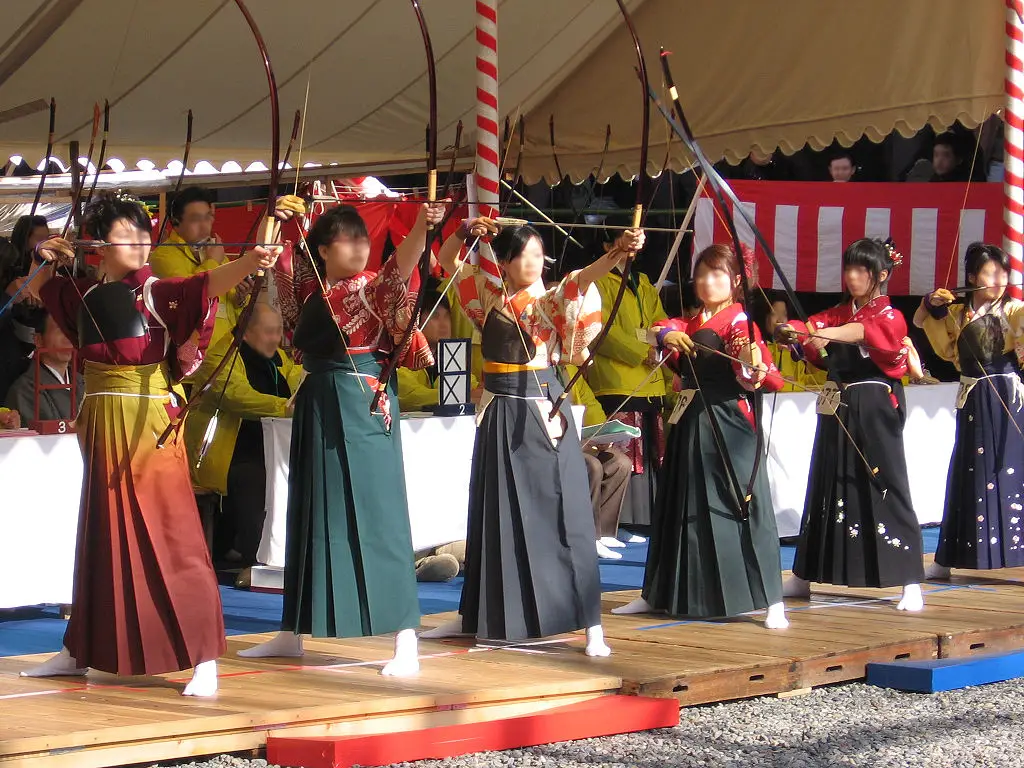
It honors the Edo period’s archery tournament where archers shot arrows at a 120-meter distant target.
When: From late December to late February
Where: Zao Onsen, Yamagata
Heavy snowfall and freezing winds transform evergreen conifers into odd-shaped white statues or the famous ‘snow monsters’.
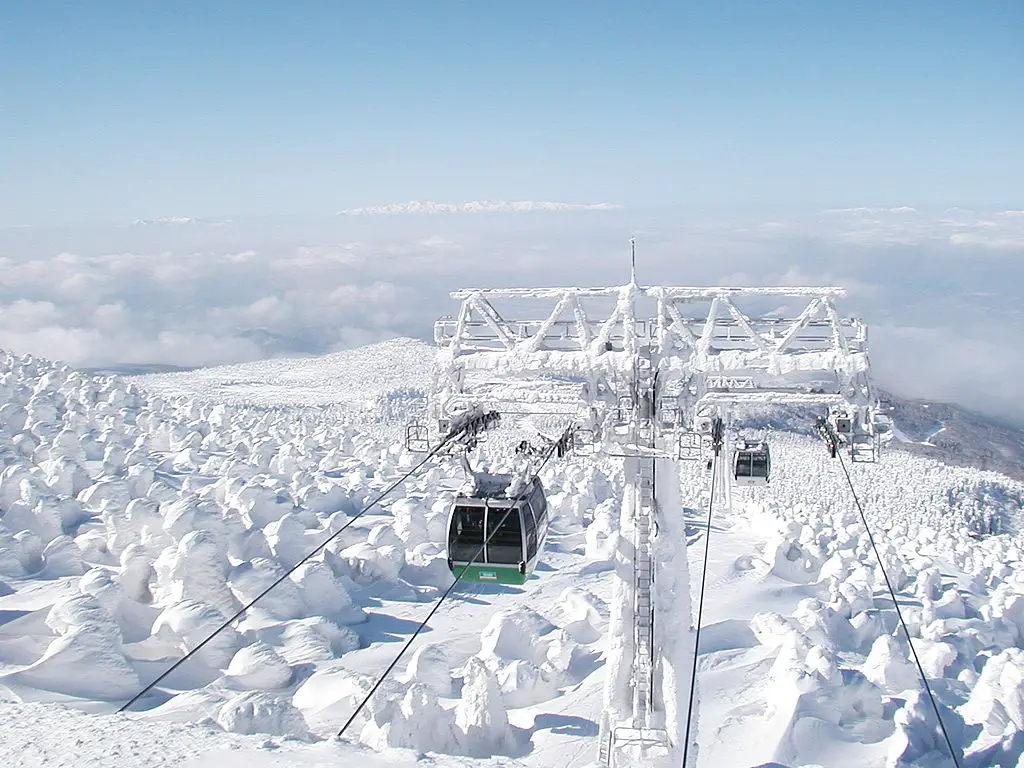
Zao ski resort arranges for night cruising vehicles for better viewing of these natural winter phenomena that look spectacular under night illuminations. Adults can get up-close views by skiing through the snowy forest.
When: January 16 to February 21, 2021 (Date changes every year)
Where: Chichibu, Saitama
Chichibu’s three Great icicles are quite famous and the star of them is the Misotsuchi Icicles due to being the only naturally formed icicles among them.
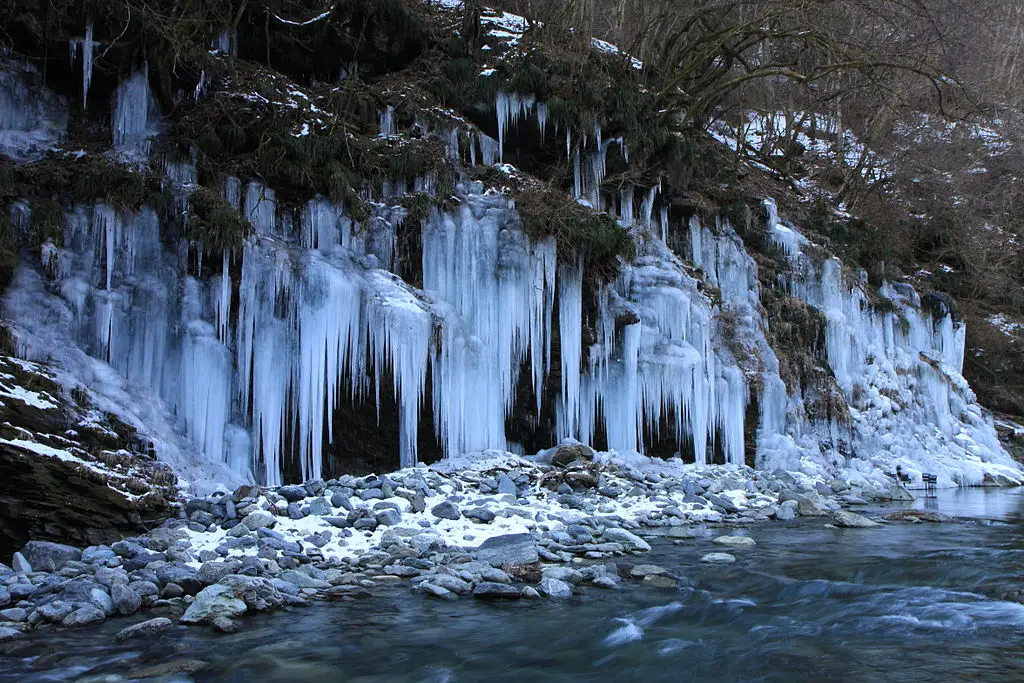
The gigantic icicles can cross 30m width by 10m height dimensions. A special lighting event is held each year where the icicles display a mesmerizing beauty under the colorful lights.
Conclusion
Japan’s winter is rather charming than being unforgivably cold and lackluster. You will get to see snow-capped trees while slurping a hot bowl of ramen noodle soup. Or, have an adrenaline shot while gliding down the ski slopes and then enjoy a refreshing hot bath in an onsen. If you are outgoing and like to meet people, join the colorful festivals. Wintertime Japan has it all.


